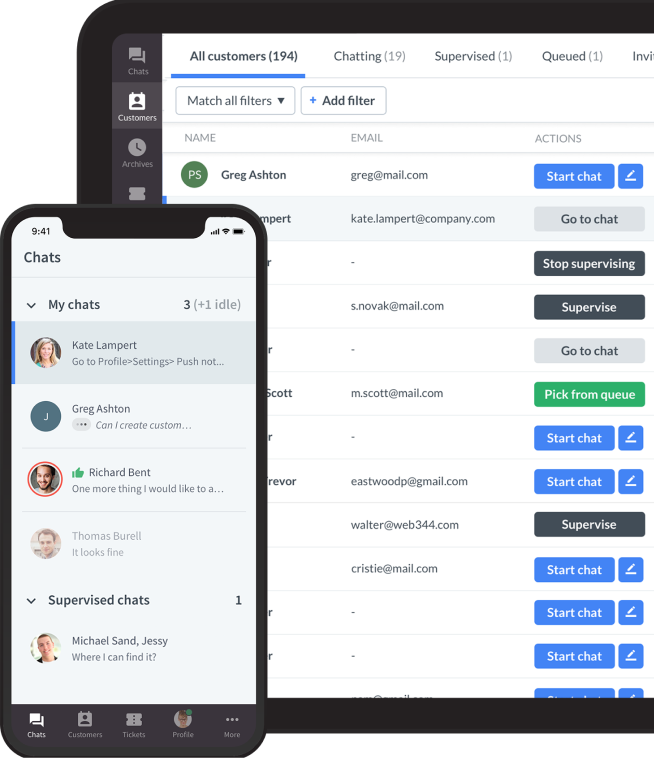Showing top 0 results 0 results found
Showing top 0 results 0 results found

Ever feel like you're playing a game of tug-of-war with your profit margins? You're not alone. Challenges like low transaction values, skyrocketing customer acquisition costs, and the constant struggle to make marketing efforts pay off can sometimes feel like you're navigating a retail maze blindfolded.
But a silent ecommerce superhero has been quietly addressing these challenges and helping businesses survive and thrive: average order value (AOV).
In this article, we'll spill the beans on how your ticket to overcoming hurdles might just be hiding in plain sight.
So, grab a cup of coffee, and let's dissect the AOV.
What is average order value?
Average order value represents the average amount customers spend per transaction on your ecommerce platform. It's a metric that gives you insight into your customers' spending habits and helps you navigate challenges such as low transaction values and high customer acquisition costs. AOV is your key to unlocking financial success and optimizing your ecommerce strategy.
Why is average order value often considered a KPI

Key performance indicator (KPI) is a metric crucial for your business. Like a north star, it should be the main thing guiding your business decisions.
AOV influences pricing, shapes marketing strategies, aids inventory management, and dictates the design of customer engagement and loyalty programs.
A comprehensive understanding of AOV fosters growth, ensures operational efficiency, and is crucial for sustained success. The average order value KPI represents the average dollar amount customers spend per transaction, making it a key metric for gauging customer behavior and overall business health.
What is a good average order value?

Figuring out what makes a stellar average order value is a bit like exploring uncharted territory. Amazon’s recent study tells us their AOV hangs around $47.31. It sounds like a benchmark to beat, right? Well, not so fast.
Here's the deal: what qualifies as a "good" AOV isn't a one-size-fits-all scenario. It depends on the nature of your products, the diversity in your inventory, and the rhythm of your business.
There's no magical number that universally defines success – it's about deciphering your market dynamics and setting AOV goals that sync up with your unique strategy. Whether you're in the suds-and-bubbles business or championing the tote bag revolution, your AOV sweet spot is all about what makes your online store thrive.
Let's paint a different picture. Imagine yourself running an online store specializing in handmade artisanal soaps on Amazon. If your AOV struggles to climb past that $47 mark, it might throw a bit of a wrench in your soap-making machinery. However, switch gears for a moment. Imagine your virtual shelves are filled with trendy eco-friendly tote bags. Suddenly, that $47 AOV might feel like a victory lap.
Average order value formula
The average order value calculation is fundamental for online businesses. It is a straightforward and powerful tool in ecommerce if you're seeking to measure your performance.
How to calculate average order value
AOV = Total Revenue : Total Number of Orders
In this equation:
- Total Revenue represents the sum of all earnings generated from customer transactions over a specific period.
- Total Number of Orders signifies the total count of orders placed during that same period.
So, if your website has raked in $100,000 from customer purchases in the last month, calculating the monthly AOV involves a three-step process:
- Sum the total revenue earned from customer transactions in the specified timeframe. It's $100,000 in our example.
- Count the total number of orders placed on your website during that period. Let's say it's 100 orders in the last month.
- Apply the AOV formula by dividing the total revenue by the total number of orders, revealing the average value of each transaction on your site for that month. That would be $100,000 divided by 100, which gives us a $1,000 average order value.
How to measure AOV

To measure average order value effectively, leverage tools like LiveChat's sales tracker and goal-setting features, or Google Analytics. LiveChat not only captures essential transaction data but also enables comprehensive goal-oriented reporting.
Google Analytics offers insights into user behavior, allowing you to track AOV trends. Utilizing pixels like Facebook Pixel enhances your understanding of customer interactions across different marketing channels.
By setting up detailed reports and optimizing for specific business goals, you gain valuable real-time data for informed decision-making and business growth.
Six ways to grow AOV
Don't overlook the impact of well-crafted strategic pricing when aiming for a higher average order value. By tailoring marketing and pricing strategies to customer preferences, businesses can organically influence AOV.
A good example would be setting a minimum purchase amount for free shipping, incentivizing customers to add more items to their carts. Simple yet powerful. Now let's see other pricing strategies you could take advantage of.
Avoid excessive upselling
The key is to create an atmosphere that feels helpful and authentic rather than sales-driven. Instead of pushing random popular items, suggest the ones that seamlessly complement the product in the user's cart, like batteries for a remote controller – practical and relevant. This way, your upselling strategy mirrors friendly guidance rather than a pushy sales pitch.
Set up a customer loyalty program

If your products are of the consumable variety, like coffee beans or laundry detergent, customers will replenish them regularly. Customers are more likely to order again and again and refrain from looking at your competitors' offers if you reward them for their loyalty to your store. Developing a customer loyalty program is an effective retention strategy, enabling you to build strong connections with your customers and enhance the overall lifetime value of your clientele.
Offer comprehensive live support
When we think of modern support teams, we often picture agents in headsets addressing issues from a boring office setting. However, in today's ecommerce landscape, businesses staffed with dedicated and experienced live chat support agents tend to experience higher sales, even a 10% to 15% increase per cart.
Moreover, offering swift, personalized assistance through omnichannel support can massively enhance customer experience, further increasing sales ratings.
Embrace customer-centric approaches by creating an atmosphere of authenticity and helpfulness. Build brand loyalty, which will translate to revenue growth in no time.
Set up product bundles

Boost your customers' shopping experience by offering thoughtfully crafted bundles and complementary products. Consider bundling items with matching colors or creating sets configured to complement each other by default. Additionally, introducing brand discounts on bundled packages adds an extra layer of value, encouraging customers to explore and purchase coordinated products.
This approach increases customer satisfaction by making their choices simpler and presents an opportunity to increase the average order value while fostering brand loyalty.
Create a win-win scenario where customers are rewarded for higher-value transactions, contributing to increased AOV and long-term customer retention.
Take advantage of free shipping and price tiers
Setting up a free shipping threshold can act as a powerful psychological trigger. Utilizing free shipping can be a game-changer, prompting more customers to add more items to their carts to qualify for free shipping costs.
Simultaneously, the allure of exclusive freebies at various price tiers acts as a powerful incentive for customers to explore higher-priced items.
This approach enhances the overall shopping experience and significantly influences the AOV metric by encouraging customers to go beyond their initial purchase intent, ultimately contributing to increased revenue and customer satisfaction.
Sell premium products at premium prices

Introducing premium products alongside a standard price range line can be a strategic move to positively impact your average order value. By offering high-quality items at premium prices within the same product line, businesses attract customers who are willing to pay extra for superior quality.
This diversifies the product range and reaches out to a growing customer base seeking high-end options, increasing the overall AOV.
11 metrics to combine with AOV
Analyzing average order value in conjunction with other metrics is valuable to gain a comprehensive understanding of your business performance. Here are some crucial ecommerce metrics that work well with average order value:
Conversion rate (CR): This measures the percentage of website visitors who make a purchase. Analyzing AOV alongside CR can help identify the effectiveness of your sales and marketing strategies.
Customer lifetime value (CLV): CLV predicts the total revenue a business can expect from a customer throughout their entire relationship. When paired with AOV, it provides insights into customer loyalty and overall business sustainability.
Revenue per visitor (RPV): RPV is the average amount of revenue generated per visitor to your website. It helps evaluate the effectiveness of your website in converting visitors into customers.
Cart abandonment rate: This metric shows the percentage of users who add products to their shopping cart but leave before completing the purchase. Understanding AOV in the context of cart abandonment can highlight opportunities to improve the checkout process and increase conversions.
Product margin: Examining the profitability of individual products in relation to AOV can guide pricing strategies and product promotions, optimizing the overall profit margins.
Customer segmentation: Analyzing AOV based on different customer segments (new vs. returning customers, geographic location, etc.) provides insights into the purchasing behavior of specific groups and helps tailor marketing efforts accordingly.
Inventory turnover rate: This metric assesses how quickly a business sells and replaces its inventory. Understanding AOV alongside inventory turnover helps manage stock levels and ensures that popular products are consistently available.
Customer acquisition cost (CAC): CAC measures the cost of acquiring a new customer. By comparing AOV with CAC, you can assess the efficiency of your customer acquisition efforts and determine if the cost of acquiring customers is justified by their spending behavior.
Cross-sell and upsell rates: Analyzing the success of cross-selling and upselling efforts in relation to AOV can highlight opportunities to increase revenue by encouraging customers to purchase additional or higher-value items.
Return rate: Understanding the rate at which customers return products provides a holistic view of customer satisfaction and can impact AOV. High return rates may lead to lower effective AOV, and addressing the underlying issues with your products can improve overall profitability.
Gross profit: Let's shine a spotlight on the role of gross profit. Gross profit, a key financial metric, is directly tied to AOV. Analyzing gross profit margins provides insights into the profitability of individual transactions and guides decisions related to pricing, promotions, and inventory management.
Three ways AOV impacts business decisions

Average order value is the compass businesses rely on to navigate crucial decisions. From pricing strategies to customer engagement, AOV isn't just a metric, it's the key to operational efficiency, marketing success, and strategic growth.
Pricing strategy
Average order value works in tandem with pricing strategies.
On one hand, understanding the average amount customers spend per transaction helps businesses make pricing decisions regarding products, service rates, and ensure profitability while remaining competitive in the market.
On the other hand, a good pricing strategy will impact average order value just as well. Implementing strategic pricing like offering volume discounts, for instance, entices more customers to increase their spendings. It's a match made in heaven and should not be parted in any circumstance.
Marketing and promotions
Average order value is a very good KPI metric to base your marketing efforts on. Successful businesses tailor campaigns to encourage existing customers to increase their online order value through bundled deals, cross-selling, or special promotions tied to specific spending thresholds. Just think about how often you've decided to buy that additional item just because a well-planted pop-up appeared in the right place and time. It works.
Inventory management
Average order value plays a surprisingly crucial role in inventory planning.
Businesses adjust stock levels based on product demand, naturally. Now, let's optimize. Check which products incorporate both high demand and high average transaction value. Consider stocking more of those items, minimizing resources, and reducing carrying costs for items with lower AOV. Sit back and see how this effort pays off in the upcoming months.
Conclusion

Understanding and leveraging the average order value metric is key to the success of your ecommerce business.
AOV brings additional depth to pricing strategies, marketing, and inventory management. Fine tuning these efforts based on this invaluable metric will pave the way for sustained growth and increased profitability of your business.
How do you make AOV work its miracles? Make informed decisions, elevate your customer experience, and watch average values soar. Remember that the bottom line for your online store lies in maximizing the value of each transaction.
Stay focused on understanding your customers, refining strategies, and optimizing them. These efforts and a commitment to excellence will make your online store bloom. Here's to your business thriving and reaching new heights!
Get a glimpse into the future of business communication with digital natives.
Get the FREE report








Comments